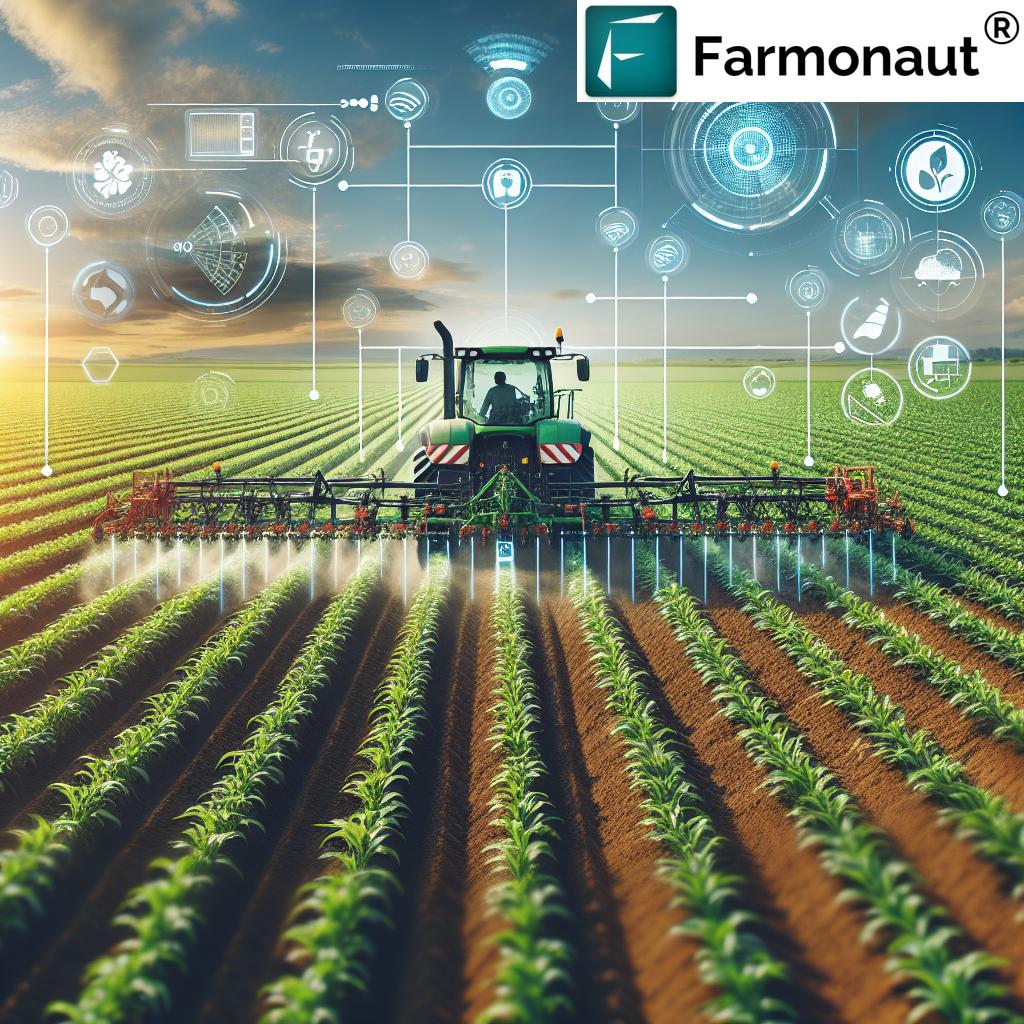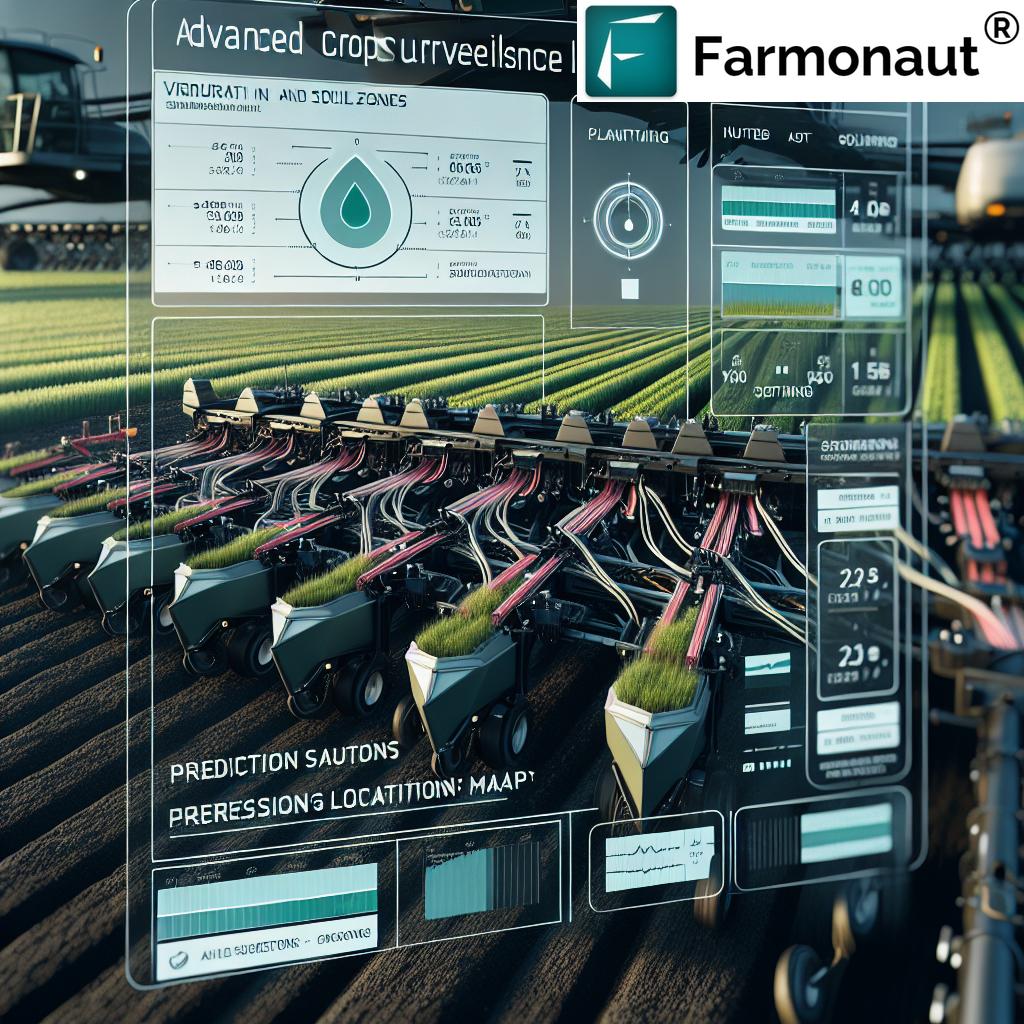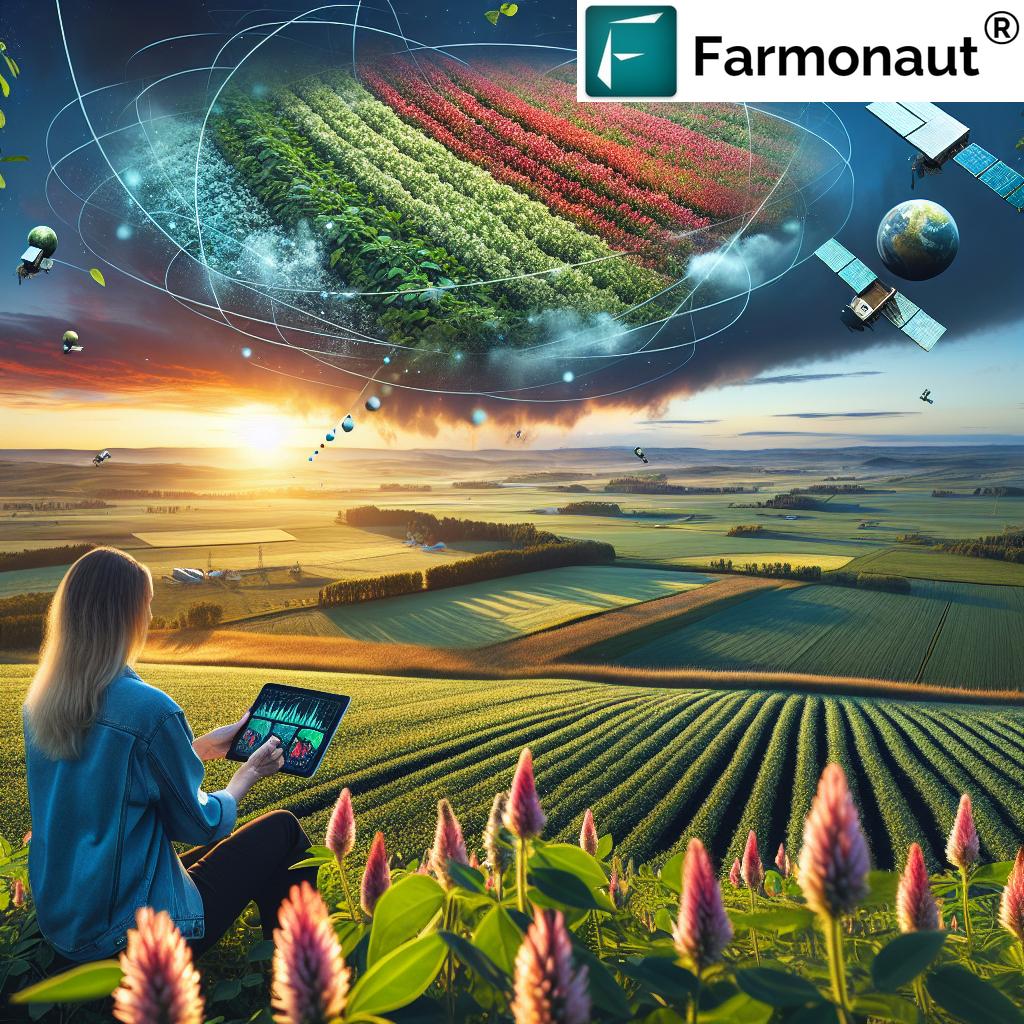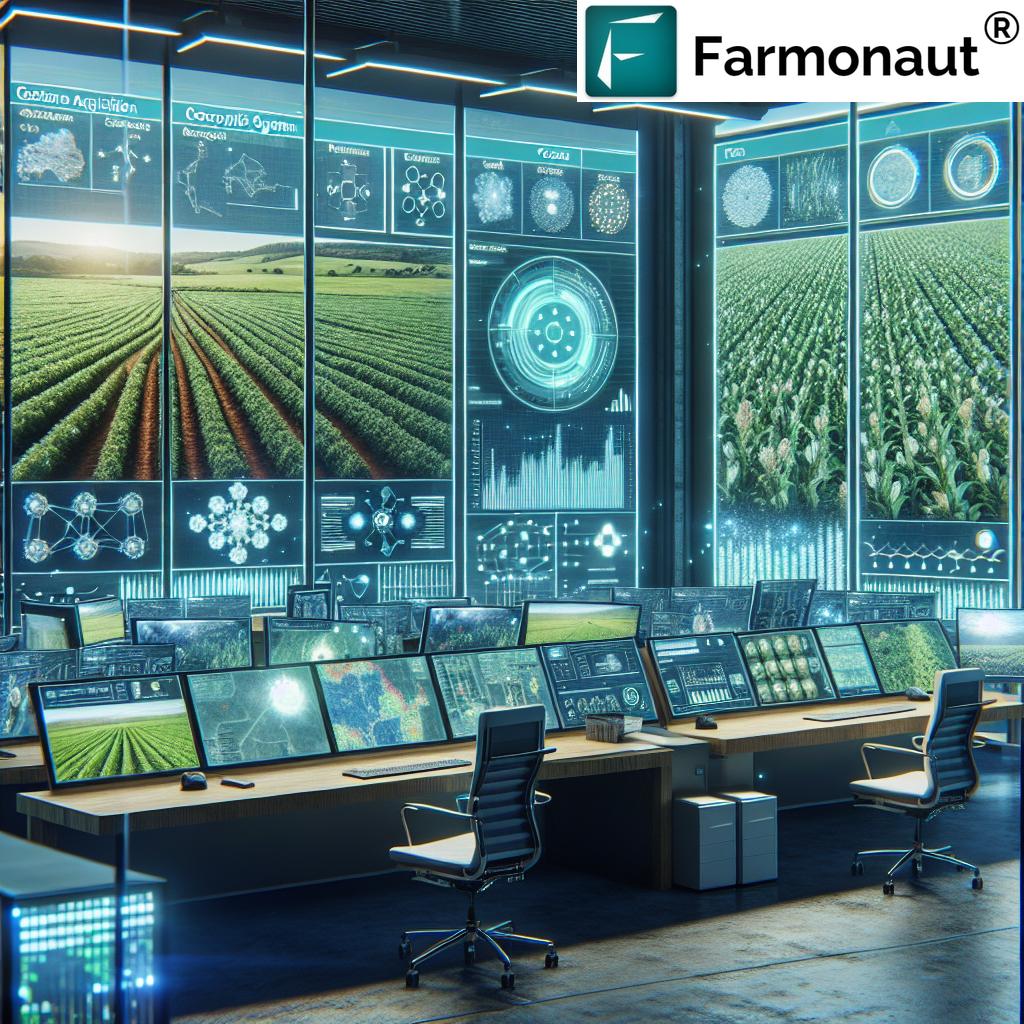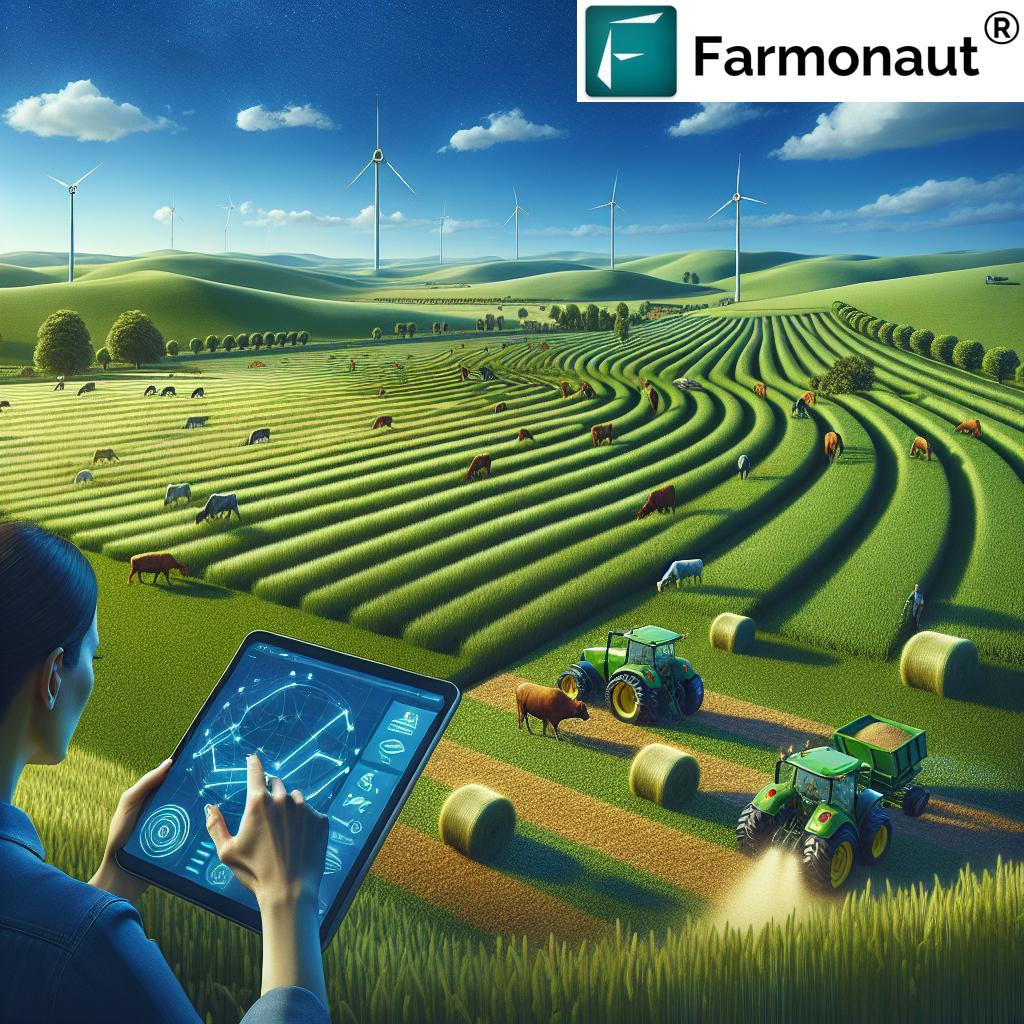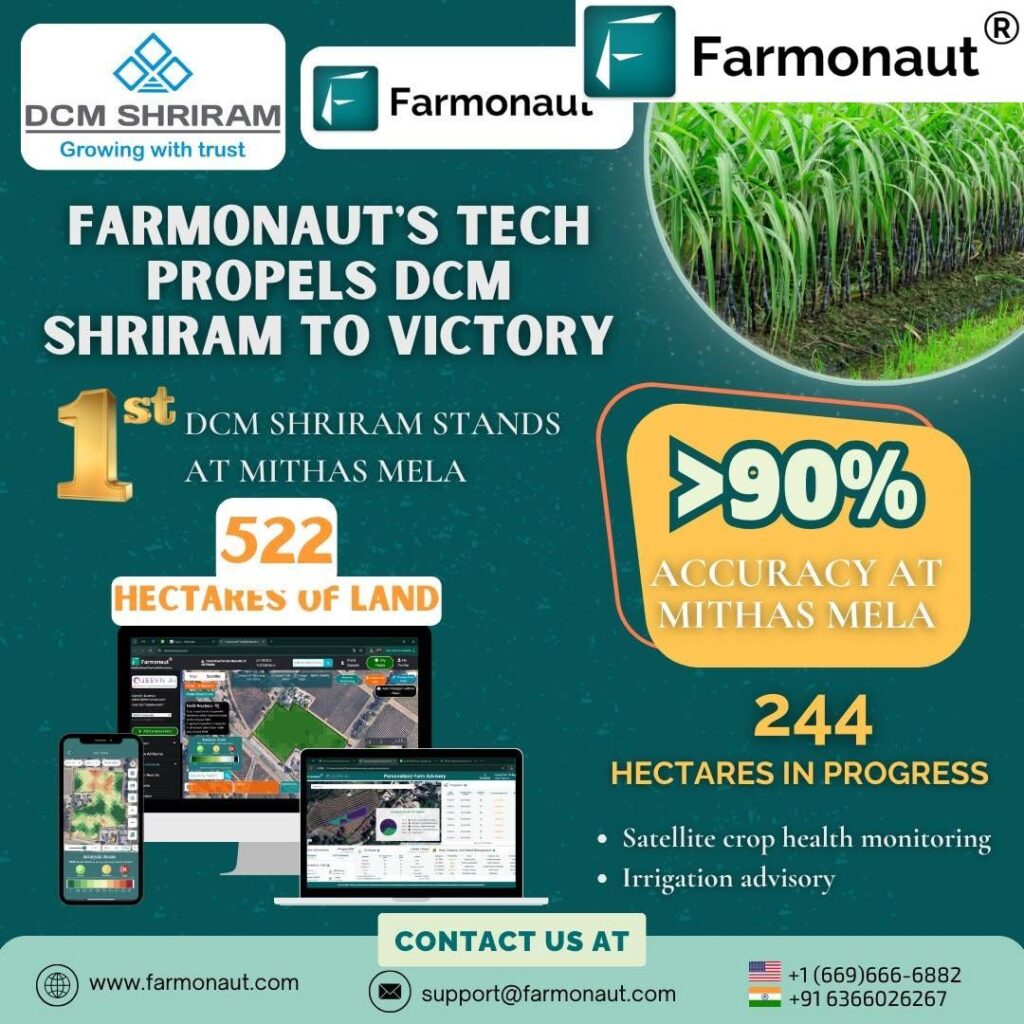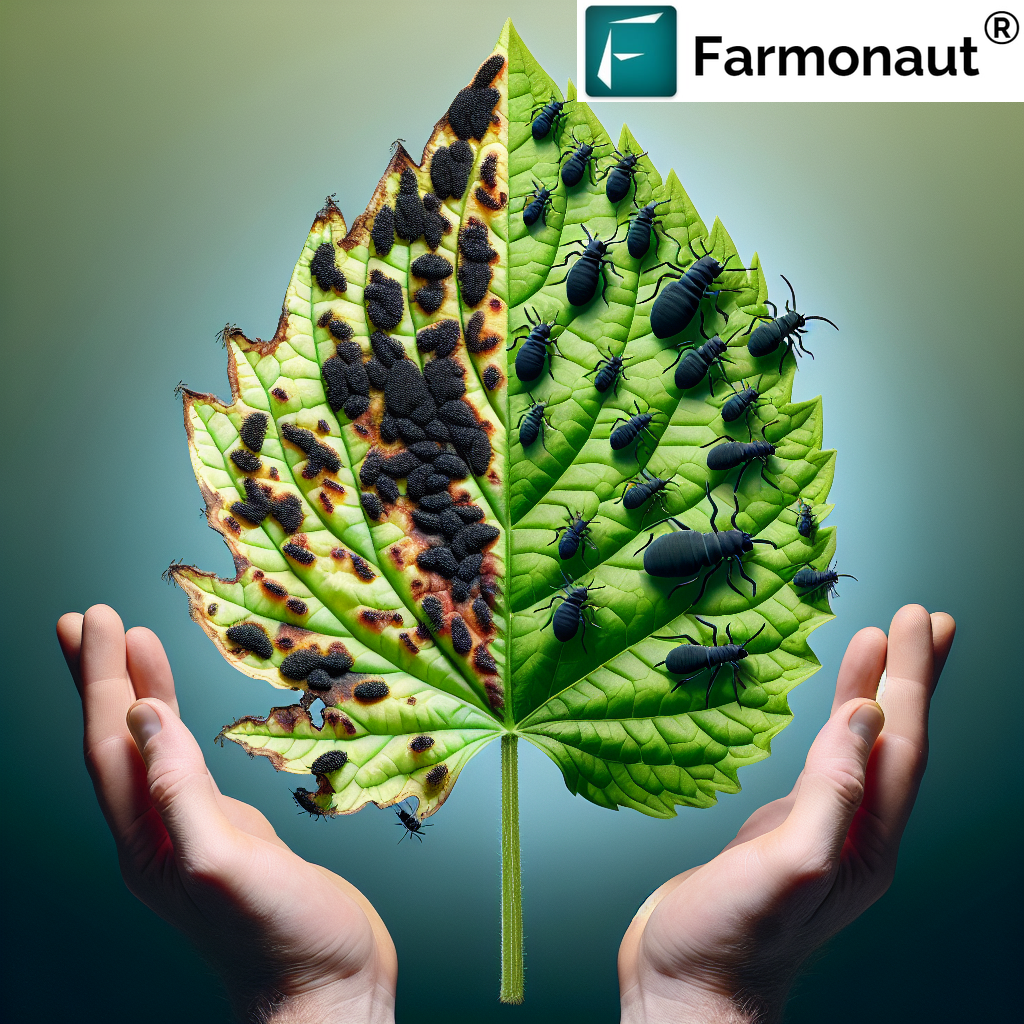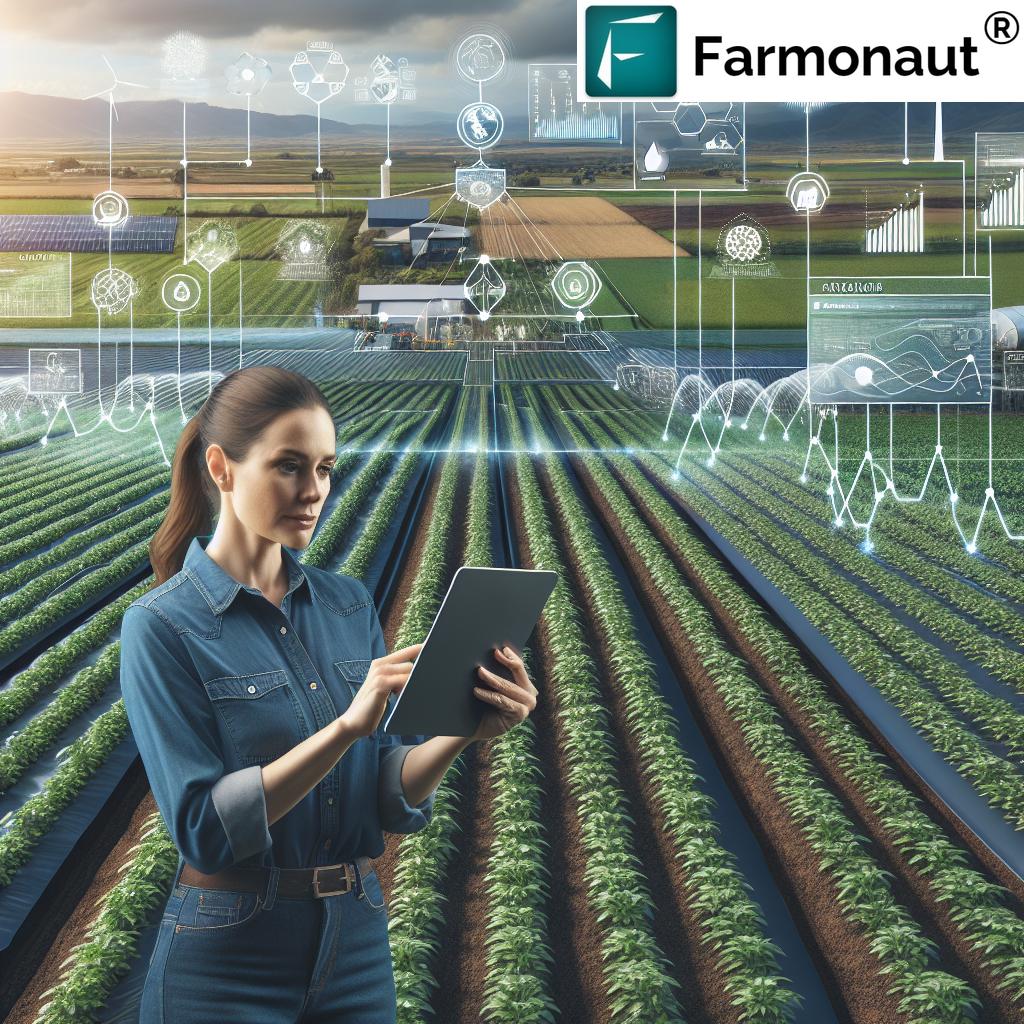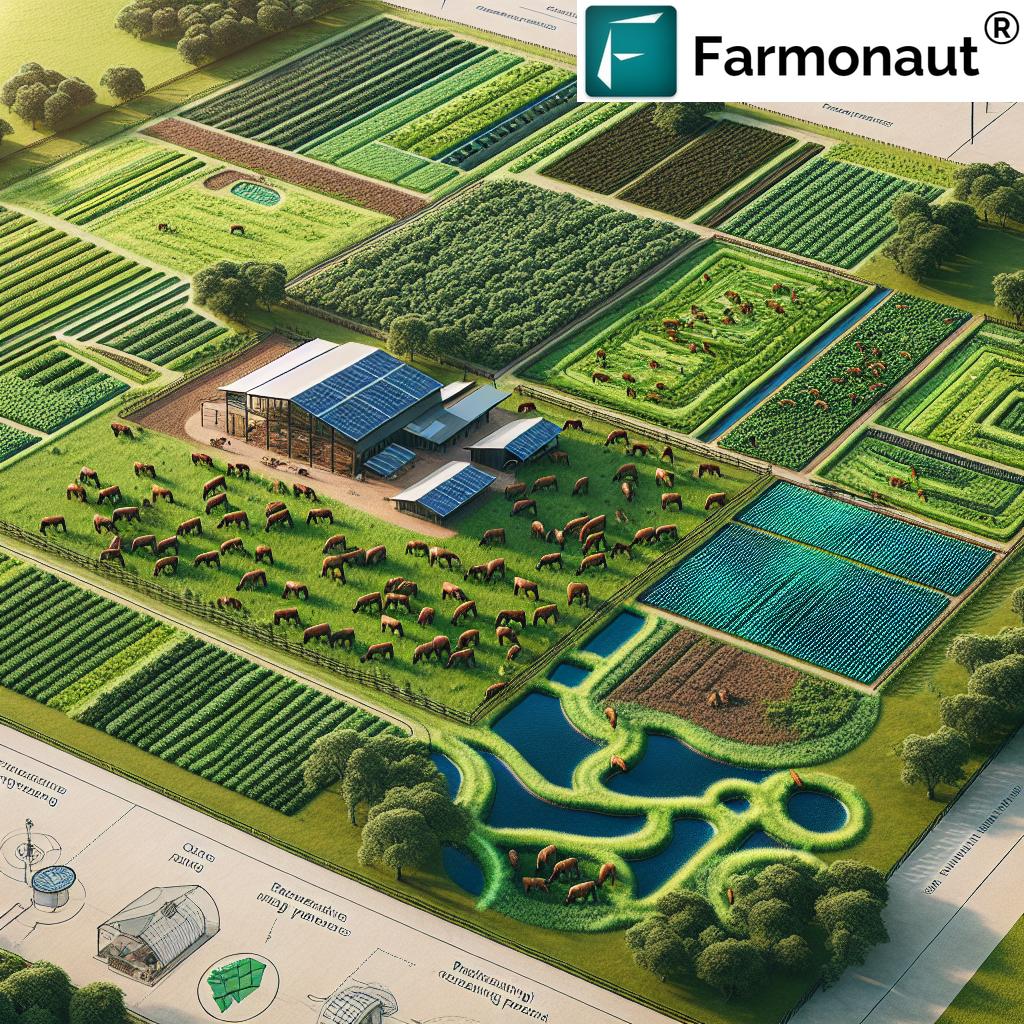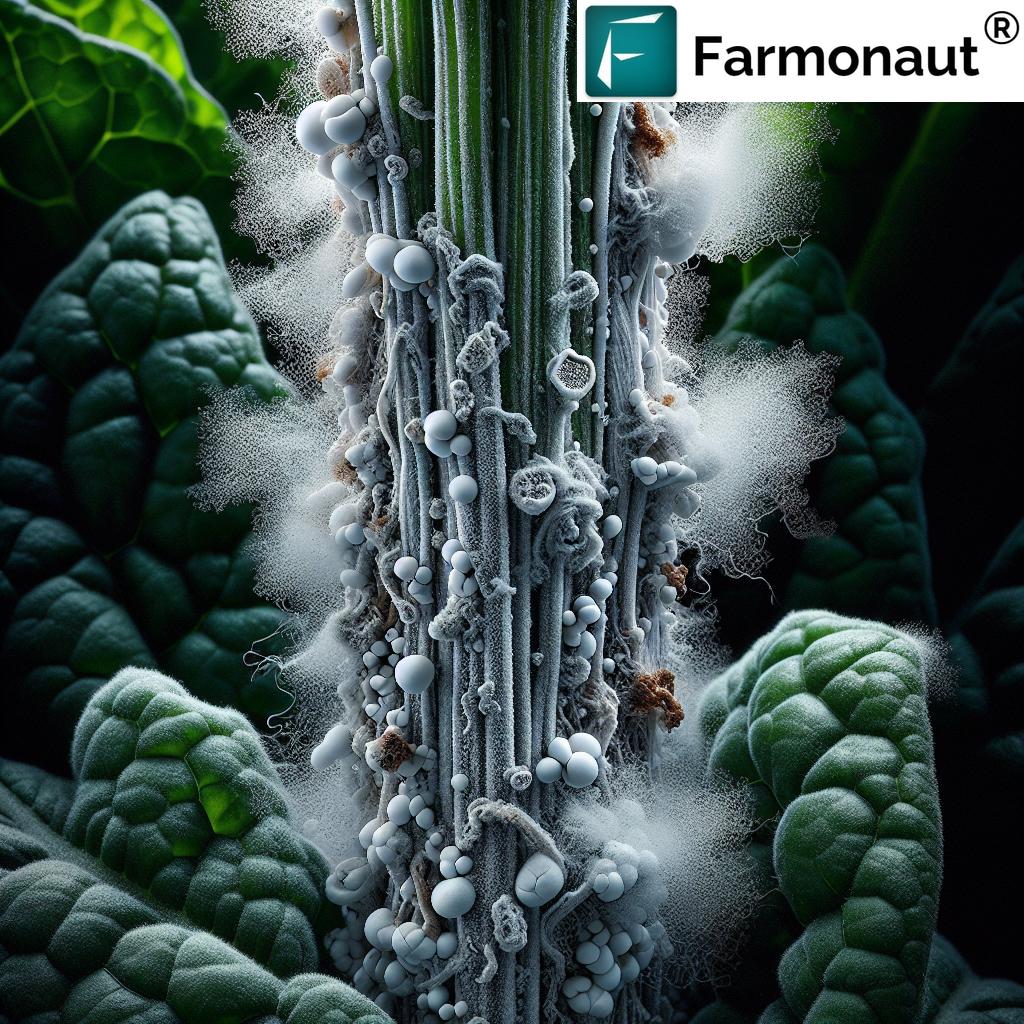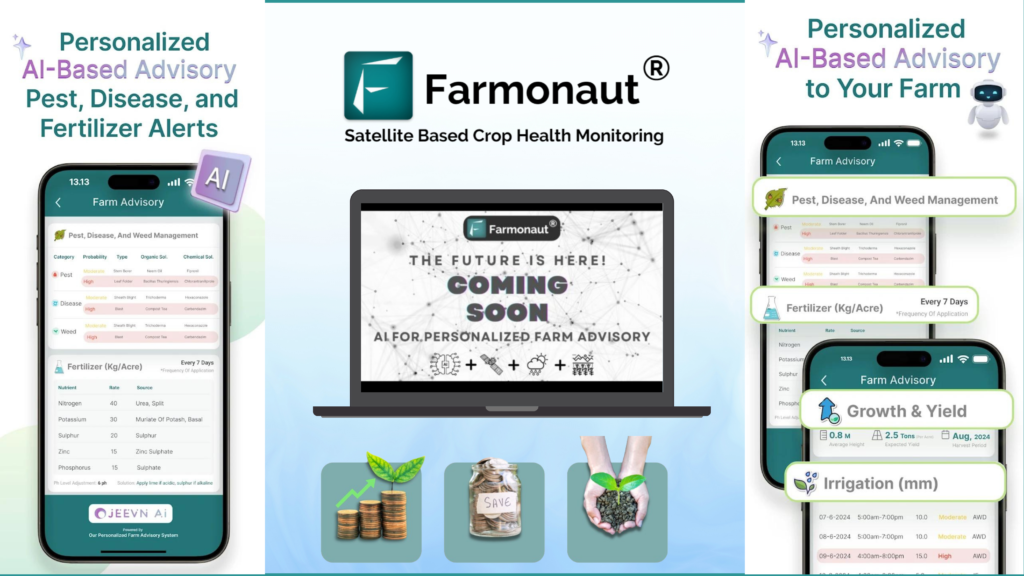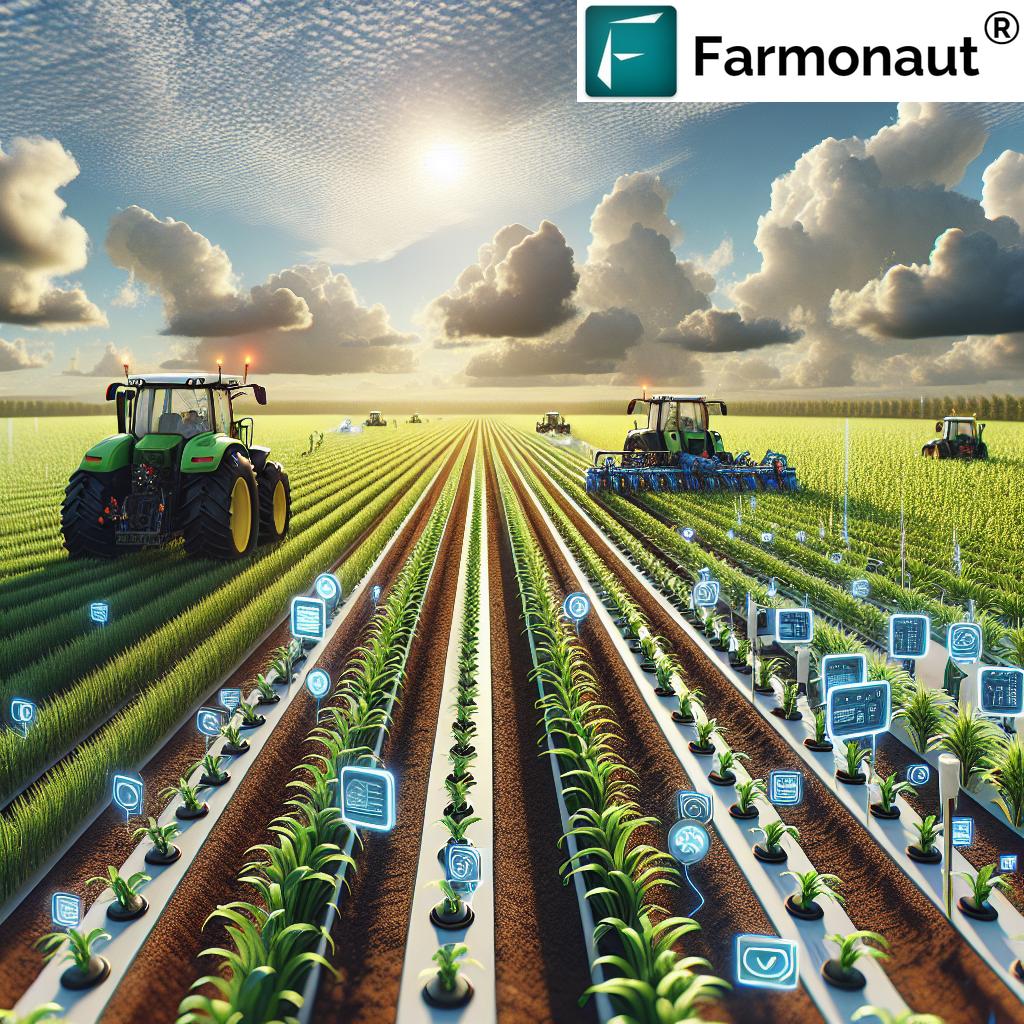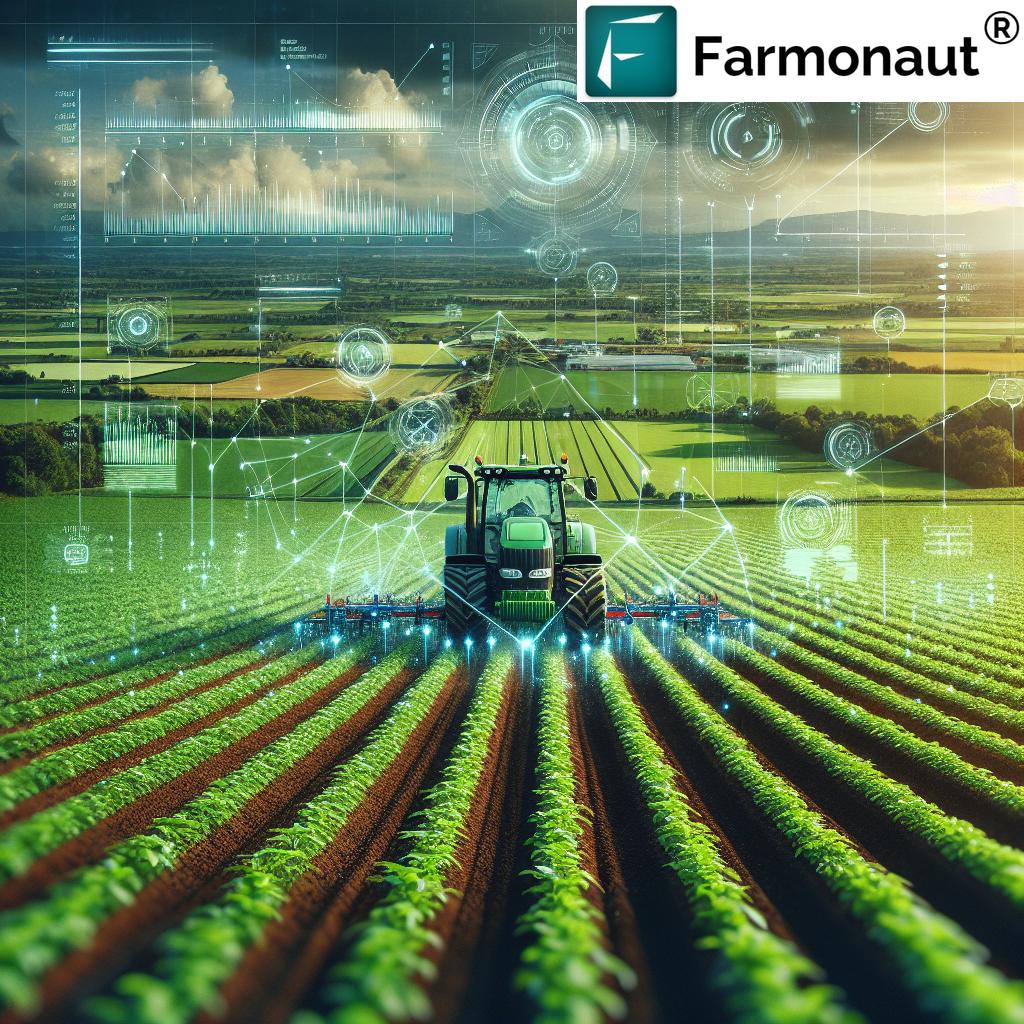Precision Agriculture Equipment: 7 Game-Changers Unveiled!
Table of Contents
- Introduction: How Precision Agriculture Equipment is Reshaping Modern Farming
- Fascinating Trivia
- The 7 Game-Changing Precision Agriculture Equipment
- Comparative Table: Precision Agriculture Equipment Features & Benefits
- Key Applications & Benefits of Precision Agriculture Equipment
- Economic and Environmental Impact
- Emerging Technologies & Future Trends in Precision Agriculture
- Farmonaut: Making Precision Agriculture Accessible
- FAQs: Get Answers to Common Questions
- Conclusion: Ushering the Future of Agriculture Today
“Precision agriculture equipment can reduce fertilizer use by up to 30% through variable rate technology applications.”
Introduction: How Precision Agriculture Equipment is Reshaping Modern Farming
As we stand at the crossroads of technology and agriculture, we are witnessing an unprecedented transformation in how we approach farming. Precision agriculture, sometimes referred to as precision farming, represents this revolution. By leveraging state-of-the-art agricultural equipment—ranging from variable rate technology (VRT) to autonomous machinery and remote sensing in agriculture—we can finally move beyond traditional practices to an era of optimized, efficient, and sustainable food production.
But what does this mean for us as farmers, agribusinesses, and stewards of the land?
Through modern precision farming solutions, we can monitor crops in real-time, apply inputs at tailored rates, and even detect emerging pest infestations before they threaten our yields. The confluence of data-driven decision making, advanced sensors, and smart equipment is not only improving farm management but also setting new benchmarks for environmental sustainability and economic viability.
Let’s explore the top seven game-changing precision agriculture equipment reshaping the landscape of modern farming.
“Autonomous machinery adoption in farming has increased crop yields by an average of 15% in recent years.”
The 7 Game-Changing Precision Agriculture Equipment
Each of these components addresses a unique need within the ecosystem of precision farming solutions. Through their synergy, we unlock undeniable farming efficiency improvements, minimize input waste, and set new standards for crop yields and resource management.
1. Global Positioning System (GPS) and Geographic Information System (GIS)
We begin our journey with the backbone of many precision agriculture operations: GPS agricultural technology and GIS. These two systems work in tandem to provide precise positioning, real-time tracking, and in-depth field mapping. Let’s break down their key roles:
- Accurately Map Fields: High-precision GPS receivers enable farmers to draw prescription maps and manage field variability effectively.
- Spatial Data Integration: GIS overlays various information layers (e.g., soil type, crop health indices, historic yield data) to guide decision-making.
- Automated Guidance: Tractors and autonomous farm machinery use GPS for efficient route planning, reducing overlap and ensuring every square meter of the field is managed optimally.
For example, GPS-guided tractors reduce input waste and ensure that each pass applies seeds, fertilizers, or pesticides exactly where needed. By combining with GIS, we can create variable rate application maps—a foundation for VRT (covered next).
2. Variable Rate Technology (VRT)
Moving beyond uniform applications, VRT stands tall as one of the leading technologies in modern agriculture equipment. It enables us to apply seeds, water, fertilizers, or chemicals at varying rates across specific zones within the field. There are two main VRT modalities:
- Map-Based VRT: Applies inputs using pre-created prescription maps based on historic yield, soil, and crop health data.
- Sensor-Based VRT: Automatically adjusts input rates on-the-go according to feedback from real-time sensors, such as NDVI or soil moisture.
Benefits of Variable Rate Technology:
- Significantly improves fertilizer use efficiency
- Enables site-specific management and optimizes use of all inputs
- Decreases environmental impact by reducing runoff and chemical use
Farmers using VRT can expect to see cost reductions (input saving up to 30%), enhanced crop yields, and healthier soils.
3. Remote Sensing & Drones in Agriculture
Remote sensing in agriculture, particularly through drones (UAVs) and satellite imagery, has completely changed how we monitor fields and guide our farm management decisions.
- High-Resolution Images: Drones equipped with multispectral or RGB cameras capture detailed images to assess vegetation health indices such as NDVI.
- Disease & Pest Detection: Early identification of crop stress, pest infestations, and disease outbreaks—before they visibly damage plants.
- Field Variability Analysis: Helps us pinpoint areas experiencing water stress, nutrient deficiencies, or weed outbreaks for targeted intervention.
Platforms like Farmonaut are leveraging advanced satellite-based crop health monitoring to deliver accessible, real-time crop monitoring technologies—requiring no additional hardware investments. This means actionable insights on our mobile devices or desktops, with guidance for irrigation scheduling, fertilization, and pest control.
Explore Farmonaut’s Satellite Capabilities: Unlock the power of carbon footprint tracking and product traceability on your farm with Farmonaut’s advanced platform, helping you monitor real-time emissions data while providing consumers with blockchain-based transparency.
4. Autonomous Farm Machinery and Robotics
The era of autonomous farm machinery is upon us. By utilizing sensors, AI, and machine learning algorithms, tractors, planters, and harvesters are now achieving tasks—from seeding and fertilizer spreading to precision weed control—with little or no human intervention.
- Labor Shortage Solutions: Autonomous tractors work around the clock, addressing seasonal labor shortages.
- Consistent Operations: Machines don’t tire or make mistakes due to fatigue, resulting in uniform field operations and optimal resource use.
- Data-Driven Optimization: Integrated with gps agricultural technology and sensor networks, autonomous equipment learns and adapts to shifting field conditions.
Interesting fact: Leading models (such as John Deere’s driverless tractors) are now fully operational, setting efficiency benchmarks and paving the way for even more advanced development in robotics.
5. Precision Seeders & Planters
The foundation for high yields is laid at the planting stage. Precision seeders and planters have redefined seeding practices:
- Accurate Seed Placement: Ensure seeds are planted at exactly the right depths and spacings according to detailed prescription maps.
- Hydraulic/Electric Adjustment: On-the-move adjustments allow us to adapt seeding rates based on real-time field conditions.
- Uniform Germination: Favorable conditions created by such planters translate to more efficient growth and higher overall crop emergence rates.
From small-scale to large commercial plantations, these seeders underpin consistent, high-density stands needed for efficient resource utilization.
6. Soil and Crop Sensors
With soil and crop sensors, we finally have a window into the invisible dynamics beneath our feet and throughout our fields. These sensors empower micro-level crop monitoring:
- Soil Moisture Sensors: Allow for precision irrigation. Know exactly when and how much to water different zones—conserving water and energy.
- Nutrient Sensors: Continuously assess soil nutrient levels to optimize fertilizer application and avoid nutrient leaching.
- In-Field Crop Sensors: Detect stress symptoms, pest infestations, and potential yield-limiting factors before visual symptoms appear.
These real-time data streams form the basis of truly data-driven agriculture, reducing guesswork and supporting timely, precise interventions.
Farmonaut’s Approach: Farmonaut’s satellite-based crop monitoring platform harnesses remote data to offer actionable recommendations on soil moisture, nutrient status, and pest/disease risks—helping users maximize yields with less input.
Want in-field, satellite-based advisory? Explore Farmonaut’s crop, plantation, and forest advisory tools for actionable satellite crop health analytics at your fingertips.
7. Precision Farm Management Systems & Integrations
At the heart of modern precision agriculture is the integration and management of all these technologies. Farm management systems (software or apps) now seamlessly blend:
- Remote Sensing Data: Collect and analyze satellite images, drone photos, and in-field sensor data.
- Advisory Modules: Platforms like Farmonaut’s Jeevn AI deliver ai-based, real-time insights, weather forecasts, and expert crop management strategies.
- Resource & Fleet Management Tools: Track machinery usage, schedule maintenance, and reduce operational costs (Explore Farmonaut’s Fleet & Resource Management Module).
- Traceability & Supply Chain Transparency: Blockchain-powered solutions (see Farmonaut Traceability Solutions) for end-to-end crop auditability.
These all-in-one platforms help us monitor the field, manage inputs, and optimize every operational aspect for enhanced outcomes.
Our advanced API Access and Developer Docs are available for integration into third-party farm software, research, or corporate platforms.
Comparative Table: Precision Agriculture Equipment Features & Benefits
Key Applications & Benefits of Precision Agriculture Equipment
Now that we’ve reviewed the main components of precision agriculture equipment, let’s explore how they deliver value across every farm operation.
Seeding & Fertilization
-
Precision Seeders:
Proper seed placement guarantees uniform germination and maximises crop establishment. Precise row and plant spacing lowers seed wastage and creates ideal microclimates for growth. -
Variable Rate Input Application:
Map-based or sensor-based VRT ensures each zone receives exactly the right amount of fertilizer or nutrients—no more, no less. This optimizes yields and cuts costs.
Explore Farmonaut’s tools for large-scale plantation management and crop area estimation to streamline field operations across vast hectares using cloud-based analytics.
Pest & Weed Control
-
Sensor-based Pest Detection:
Whether through drone imagery, remote sensing, or in-field sensors, early detection of weed outbreaks or pest infestation allows targeted chemical application. -
Site-Specific Application:
Directing herbicides or pesticides only to affected areas drastically reduces environmental impact and chemical residue.
Integrated platforms provide actionable alerts and create prescription maps, supporting fast and responsible intervention.
Irrigation Management
-
Soil Moisture Sensing:
Optimize water use efficiency by applying exactly the right volumes. No more over-irrigation, waterlogging, or leaching. -
Storm & Drought Monitoring:
Remote sensing data and AI-powered weather analytics allow us to guide irrigation practices for resilient crop performance even under climatic stress.
Unlock satellite-powered, area-specific irrigation recommendations on Farmonaut’s platform. Access crop status, weather forecasts, and water stress analytics from your phone. Try it now!
Economic and Environmental Impact
Implementing precision agriculture equipment isn’t just about yields—it’s about sustainable profitability and long-term environmental stewardship:
Economic Benefits
- Input Optimization: Reduced fertilizer, pesticide, and water usage leads to direct cost savings (input cost reductions of 20-30% are common).
- Yield Increase: More consistent, resilient crop production, translating to higher farm income, especially in variable or challenging seasons.
- Labor Efficiency: Autonomous and remote-guided equipment enables fewer staff to manage larger areas with greater consistency, mitigating labor shortages and lowering wage overhead.
- Operational Streamlining: Fleet and resource management modules (like those in Farmonaut) cut fuel, downtime, and maintenance costs.
Environmental Sustainability
- Reduced Chemical Footprint: Targeted VRT and sensor-based approaches minimize unnecessary application, reducing chemical runoff and pollution.
- Water Conservation: Smart irrigation tools, paired with real-time soil moisture sensors, optimize every drop—addressing both conservation and compliance.
- Carbon Footprinting: Platforms like Farmonaut’s Carbon Footprinting Tool allow real-time emissions tracking, supporting regulatory requirements and market access for sustainably-grown produce.
While the initial investment in modern agriculture equipment can be significant, operational savings and compliance with sustainability standards often drive rapid ROI, especially for those seeking to scale efficiently.
“Precision farming practices can help increase water use efficiency by up to 25% in irrigated crops.”
Emerging Technologies & Future Trends in Precision Agriculture
The landscape of precision agriculture equipment never stands still. Here’s what’s on the horizon:
-
Artificial Intelligence & Machine Learning:
AI-driven models, like Farmonaut’s Jeevn AI, will power predictive analytics—from yield forecasting to pest outbreak prediction—enabling faster, more informed responses. -
Internet of Things (IoT) Networks:
Meshes of wireless field sensors, drones, and connected machinery deliver real-time field status for granular management of every hectare. -
Open-source Automation Projects:
Initiatives like FarmBot are lowering cost and accessibility barriers for smallholders to adopt precision farming solutions without expensive OEM equipment. -
Autonomous Equipment Expansion:
Continuous development is making driverless tractors, sprayers, and harvesters more affordable—even for mid-size operations.
We can expect precision farming solutions to become even more integrated, scalable, and driven by the cloud and AI-powered decision support.
Farmonaut: Making Precision Agriculture Accessible, Affordable, and Scalable
Farmonaut is redefining how we manage farm operations and implement precision farming worldwide.
Farmonaut’s Unique Technologies
-
Satellite-Based Crop Health Monitoring:
Access multispectral satellite images to monitor vegetation health (NDVI), soil moisture, and crop stress—without additional on-farm hardware. -
Jeevn AI Advisory System:
Get realtime, AI-based recommendations on crop management, irrigation, fertilization, and climate risk. Empower your decisions with hyperlocal, data-driven insights for higher yields and better resource management. -
Blockchain-Based Traceability:
Ensure entire supply chain transparency for your farm produce with secure product traceability—from field to consumer, reinforcing market trust. -
Fleet & Resource Management:
Monitor machinery, schedule maintenance, and optimize logistics—even across vast operations. Find out more. -
Carbon Footprinting:
Align with sustainability goals and measure the environmental impact of your farm with live carbon data for every operation (see Farmonaut Carbon Footprinting).
Scalable Solutions for All Stakeholders
Whether you are a smallholder, a corporate farm, or a government/NGO:
- Individual Farmers: Use affordable subscription packages for real-time crop monitoring and action advice.
- Agribusinesses: Manage fleets, analyze large-scale field data, and optimize every input.
- Governments: Enhance subsidy delivery, crop area/yield estimation, and disaster response using advanced monitoring platform.
- Financial Institutions: Approve loans and manage crop insurance claims with satellite-based farm verification.
- Corporate Clients: Assure consumers and downstream partners of product authenticity with blockchain-enabled traceability.
Accessible Anywhere, Anytime
-
App & API:
Use via Android, iOS, web browser, or through the open API portal for custom integration.
Choose your subscription, scale as you grow:
Join the future of precision agriculture with Farmonaut: real-time alerts, data-driven recommendations, affordable subscriptions, scalable to millions of hectares or a single field.
FAQs: Get Answers to Common Questions
1. What is precision agriculture equipment and why is it important?
Precision agriculture equipment consists of advanced tools and technologies—such as GPS, sensors, drones, variable rate applicators, and autonomous machinery—that enable farmers to manage field variability and apply inputs more efficiently. It’s essential for maximizing yields, reducing waste, conserving resources, and ensuring sustainable production practices.
2. How does variable rate technology (VRT) improve efficiency?
VRT allows for site-specific input application—such as fertilizers, seeds, and water—at different rates tailored to each area of a field. This optimizes resource use, reduces environmental impact, and enhances yield potential.
3. Can small-scale farmers benefit from these technologies?
Yes! Affordable solutions from platforms like Farmonaut, which leverage satellite and AI-based analytics, are making precision farming accessible to smallholders as well as large-scale agribusinesses.
4. What are the startup costs for precision agriculture equipment?
Costs vary depending on the technology and scale—hardware-based solutions can be more capital intensive, while cloud-based, satellite, and app subscriptions (like those from Farmonaut) drastically lower entry barriers.
5. How does remote sensing in agriculture work?
Remote sensing uses satellite or drone imagery to monitor crops, soil, and field conditions. Analyzing data such as NDVI helps detect plant stress early, informs irrigation and fertilization, and supports precision decision-making.
6. Can Farmonaut’s solutions be integrated into my existing farm management systems?
Absolutely! Farmonaut provides APIs and developer documentation, allowing seamless integration of satellite and crop weather data into custom or legacy farm management systems.
Conclusion: Ushering the Future of Agriculture Today
The precision agriculture equipment revolution is no longer a distant vision—it’s our reality. Through integration of variable rate technology, autonomous farm machinery, sensors, and real-time analytics, we are fundamentally changing how food is grown, managed, and brought to market.
Modern precision farming solutions deliver more than efficiency: they empower us to be better custodians of our land, water, and resources, fostering increased crop yields, improved farmer livelihoods, and a healthier environment.
Farmonaut is proud to enable this transformation—making advanced monitoring, AI advisory, resource management, and blockchain traceability accessible no matter your farm’s size or location. Get started, scale up, and unlock your farm’s full potential today!
Download the Farmonaut app for free:
Have questions or want a custom integration? Explore our API now!
Precision Agriculture Equipment: The ultimate path to smart, sustainable, and profitable farming for all.


